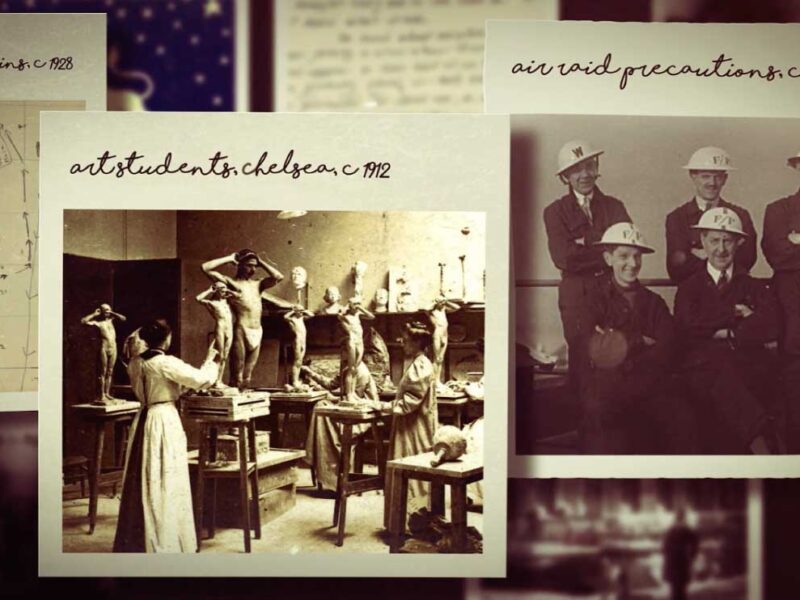
In this issue
Into the Archives: Inside King’s
The King’s Archives is a huge collection, housing articles that date all the way back to 1828. We invite you...
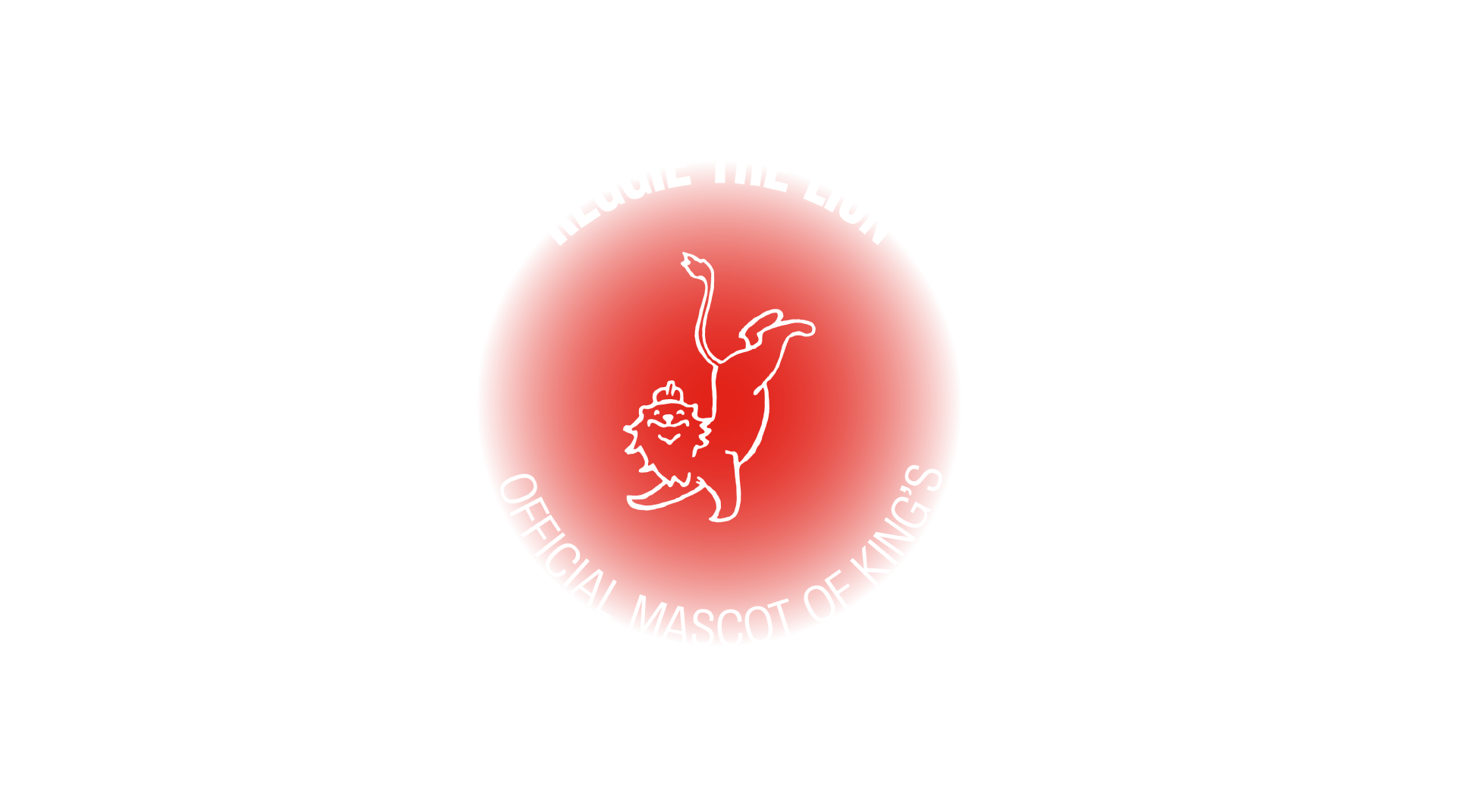
Read time: 5 mins
This year, we celebrate the centenary of King’s beloved mascot, Reggie. From fraught beginnings as a cub forged in the crucible of King’s great rivalry with University College London (UCL), through numerous kidnapping attempts and even a World War, Reggie’s life has required every ounce of the courage so famously associated with the animal he depicts.
Below shows a timeline of his story – from his inception and tumultuous youth to his current position as the emblem of King’s College London.
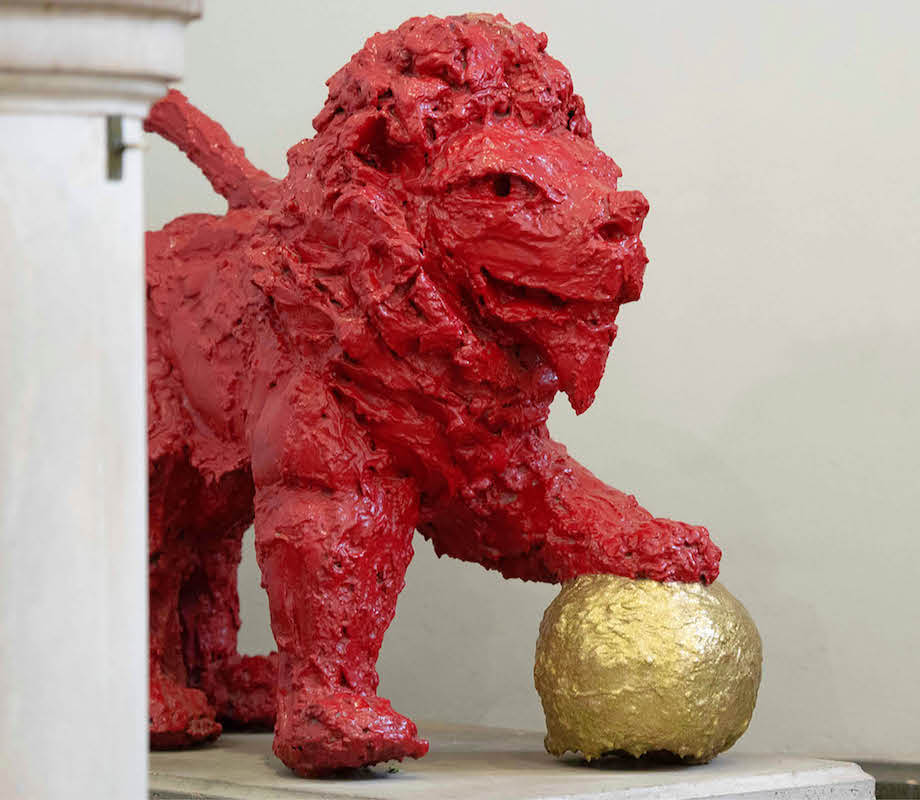
Celebrating our mascot
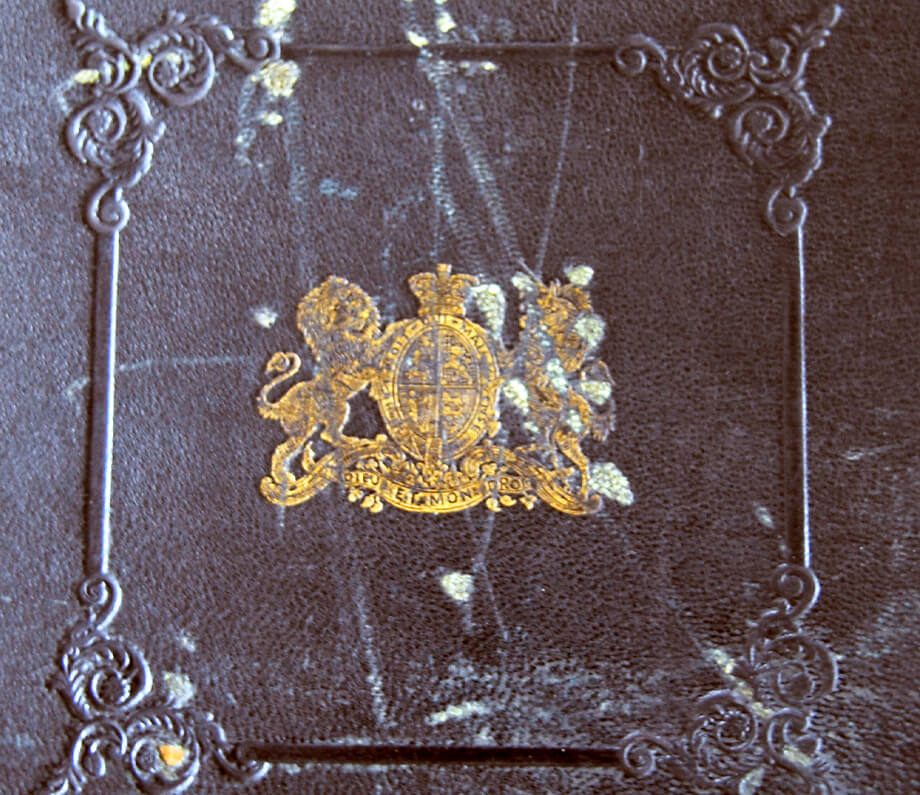
King’s adopts the coat of arms of its founder, King George IV, featuring a lion standing proudly on top of the crown.
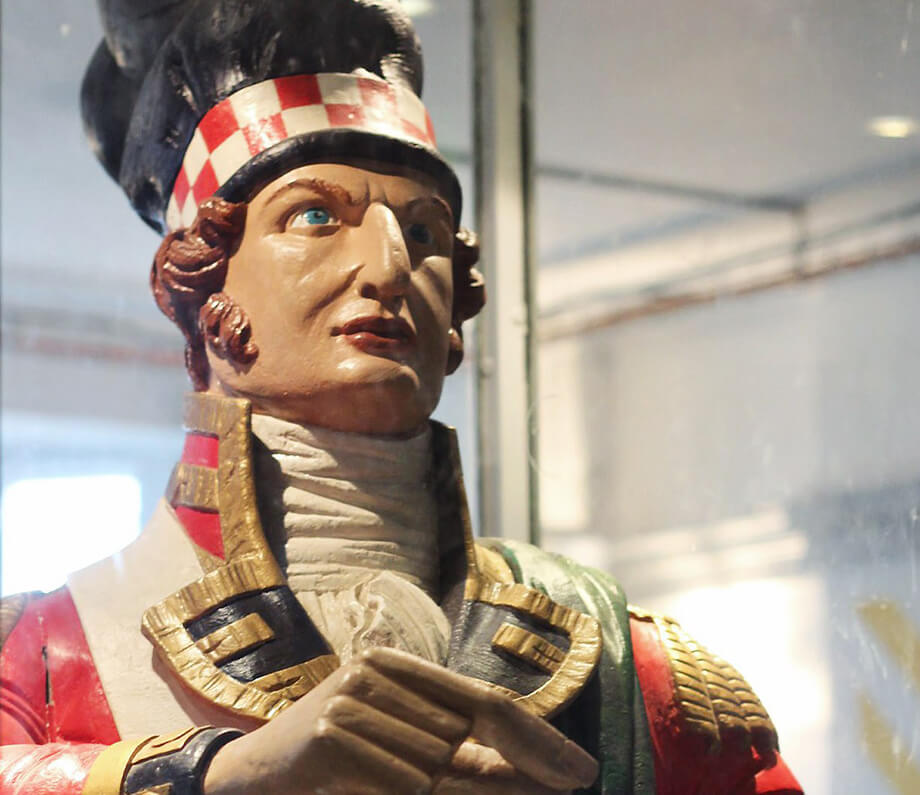
UCL acquires a statue of the Scots Infantryman Phineas Maclino as its mascot. Now starkly mascot-less, King’s found its honour in doubt, and would do so for the next 20 years.
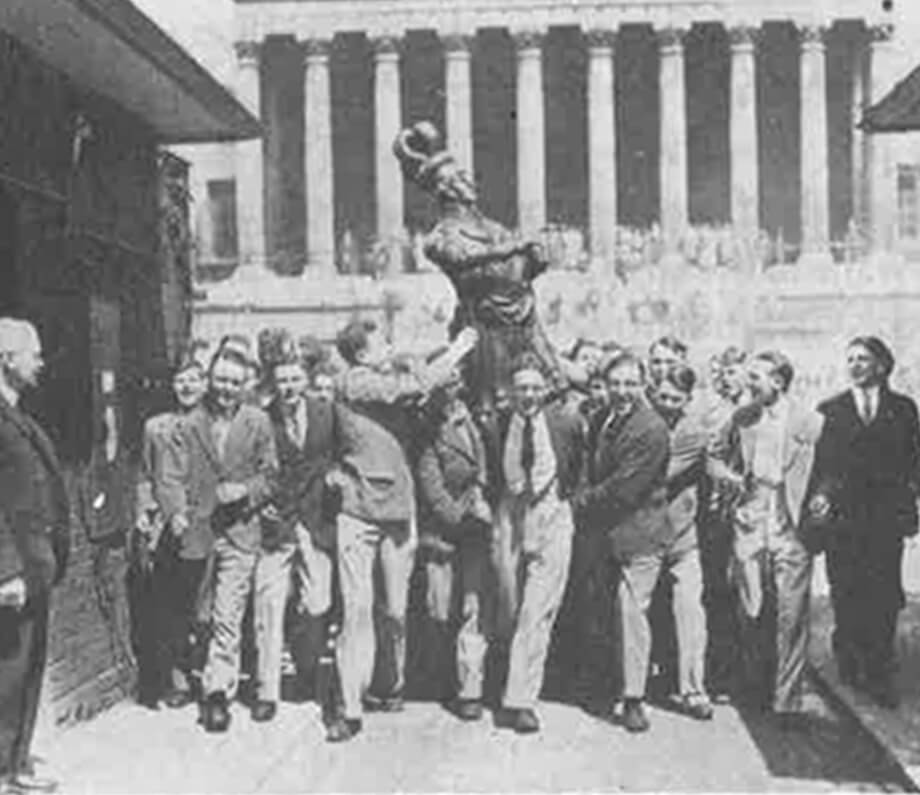
Tired of this decades-long embarrassment and enraged by a recent slight against the College’s rugby team, King’s students kidnap Phineas Maclino. UCL students storm the Quad, initiating an hour-long scuffle that required police intervention. Phineas is returned to UCL missing an arm.
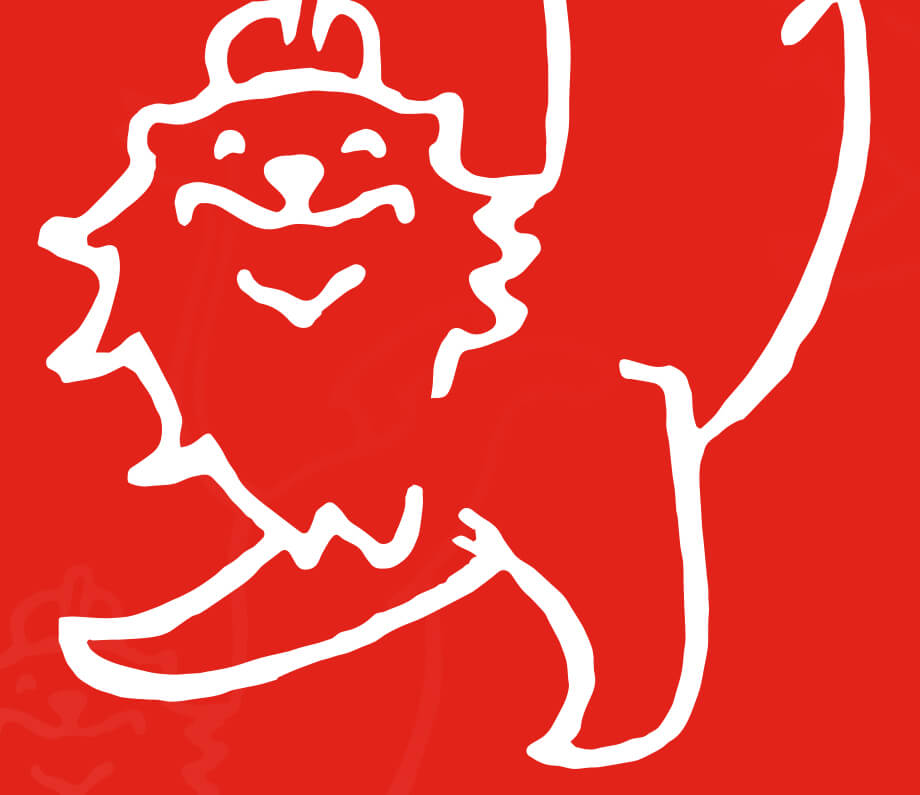
A large papier mâché bottle, ‘Bottled Youth’, appears at rugby fixtures, guarded by King’s engineers.

King’s students Mary Edwards and Margaret Robinson set out to find a lion mascot more in keeping with the King’s coat of arms, after dubbing ‘Bottled Youth’ a ‘poor, ugly and pretty pointless thing’. Eventually, one is found made of beaten copper with its paw resting on a globe and is purchased for £7 (a hefty sum in those days).
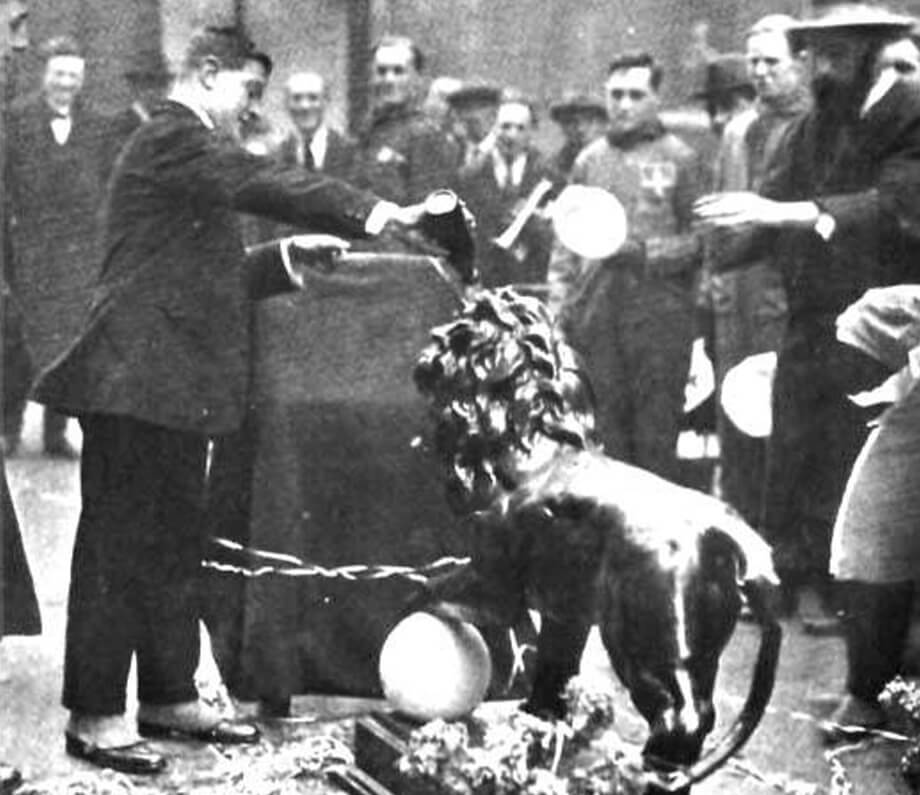
The lion is initially named ‘Lucy’, then ‘Rex’, before his official christening of ‘Reggie’ at a special meeting of the King’s College Union Society.
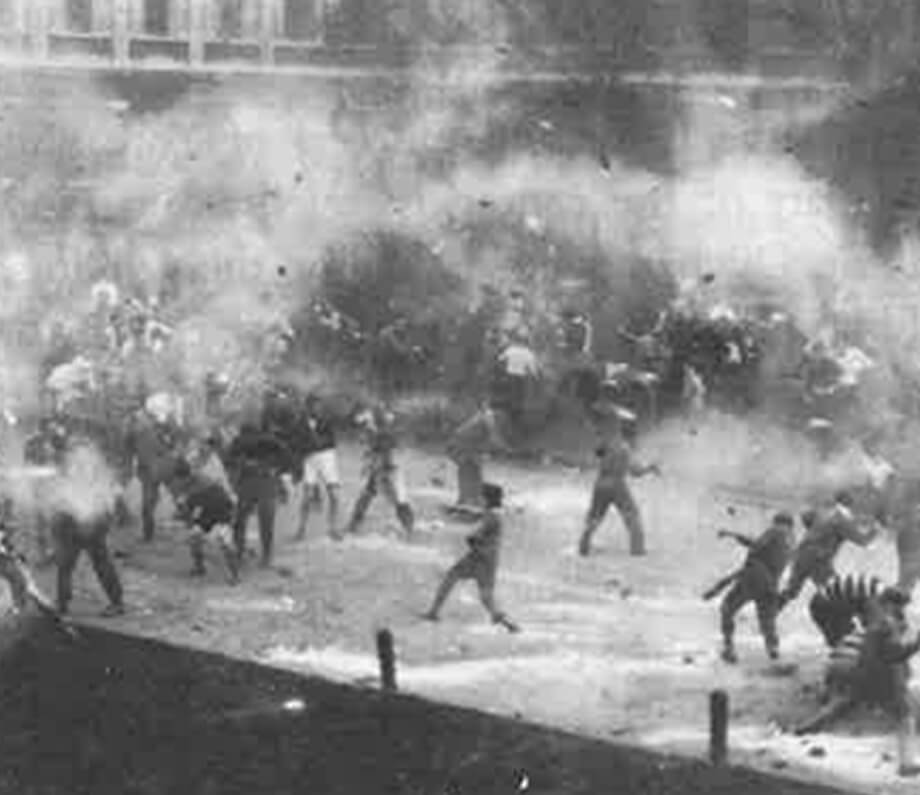
Reggie is stolen for the first time! King’s students march up to Gower Street to retrieve him from UCL, wielding rotten fruit. Two arrests are made during the scrum, which even drew the attention of the press, and Reggie is recovered, painted and filled with fruit.
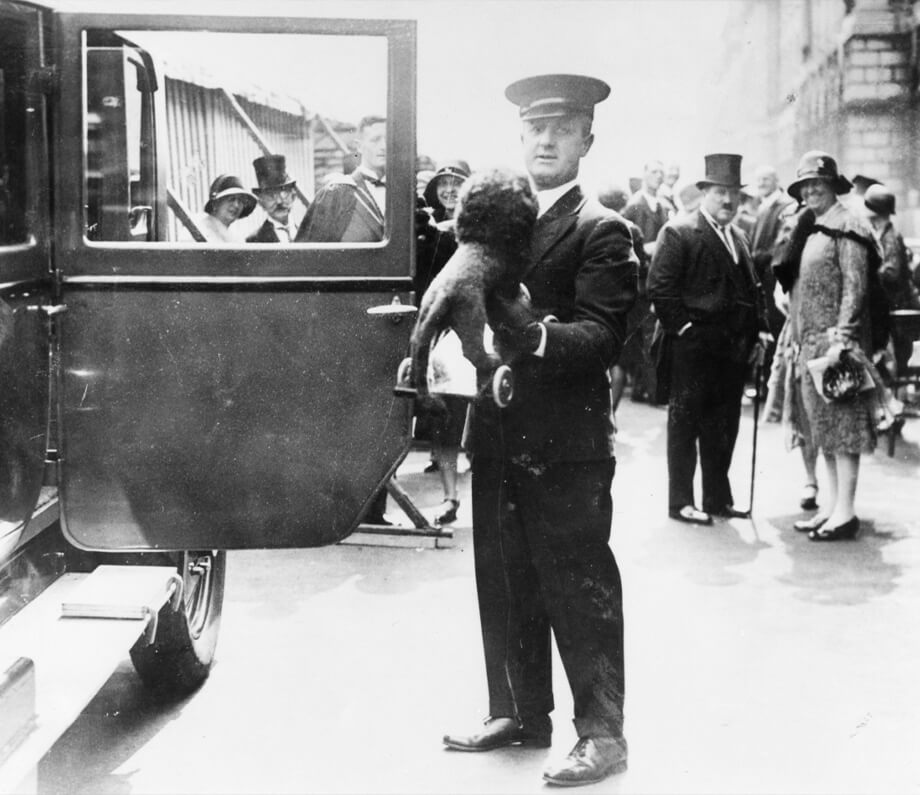
The Duke and Duchess of York visit King’s as part of the College’s centenary celebrations, accompanied by the young Princess Elizabeth, who is gifted with a small woollen ‘Reggie’ on wheels. A letter signed by the Royal Secretary, received a few days later, states that she was ‘quite delighted with the red lion and refuses to play with anything else’. Reggie would make his imprint on many more famous figures in the coming years, including the cartoonist Cyril Kenneth Bird (aka ‘Fougasse’), a King’s engineering student from 1904 to 1908 who produced many drawings of Reggie, one of which was used as the College’s informal logo for a time.

Reggie attends the Lord Mayor’s Parade, which for perhaps the first (and certainly the last) time included circus and zoo animals. Reggie was raised aloft cheerily by King’s students at the Embankment entrance, much to the anger of the procession’s elephant contingent.
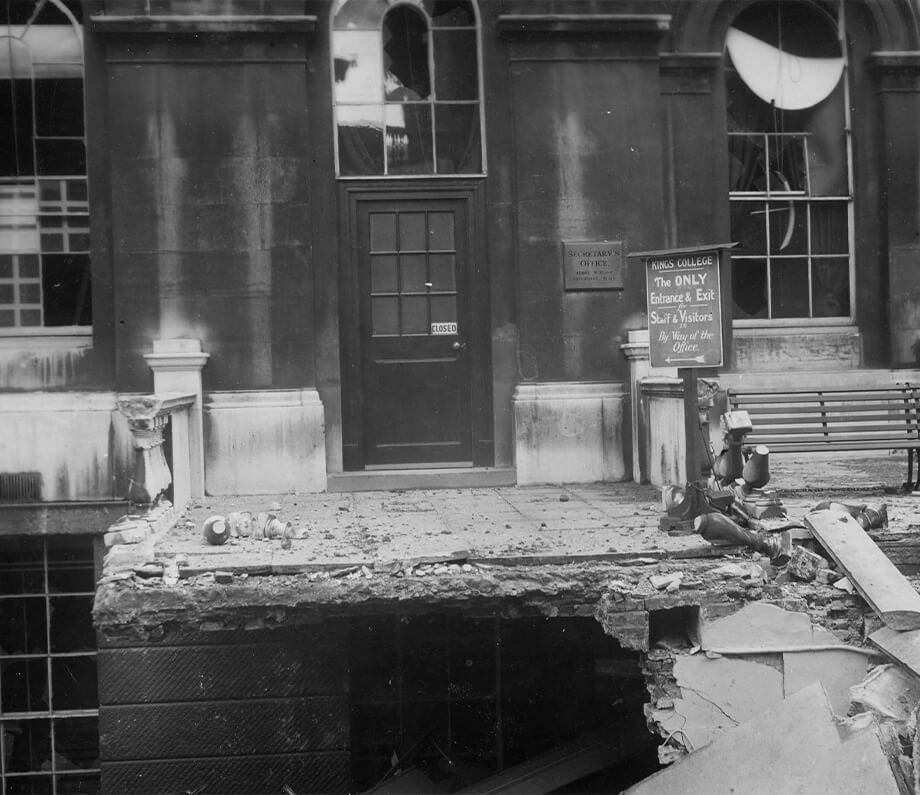
The Second World War begins. Reggie, and many King’s students, are evacuated to Bristol.
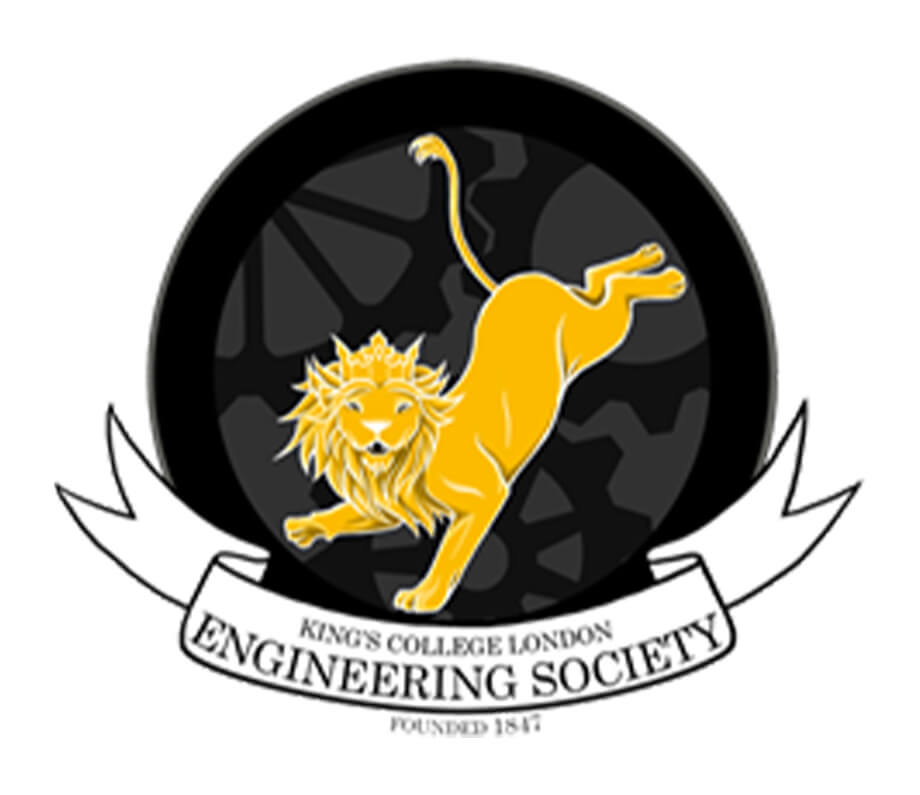
Bristol students attempt to kidnap Reggie during a union debate, but are foiled by King’s student D L Leete. For this act of heroism, he is awarded a medal by the Engineering Society, bearing the words ‘Hail, O Defender of the Lion’.

After some time in this new city, the Engineering Society suggested it would be useful to have a replica Reggie for events that took place when the original was not available. Twin lions, each named ‘Reggie Minor’ are acquired after King’s students scour various junk shops and antique dealers in Bristol. They are repainted red, with one gifted to the Union Society and one to the engineers.
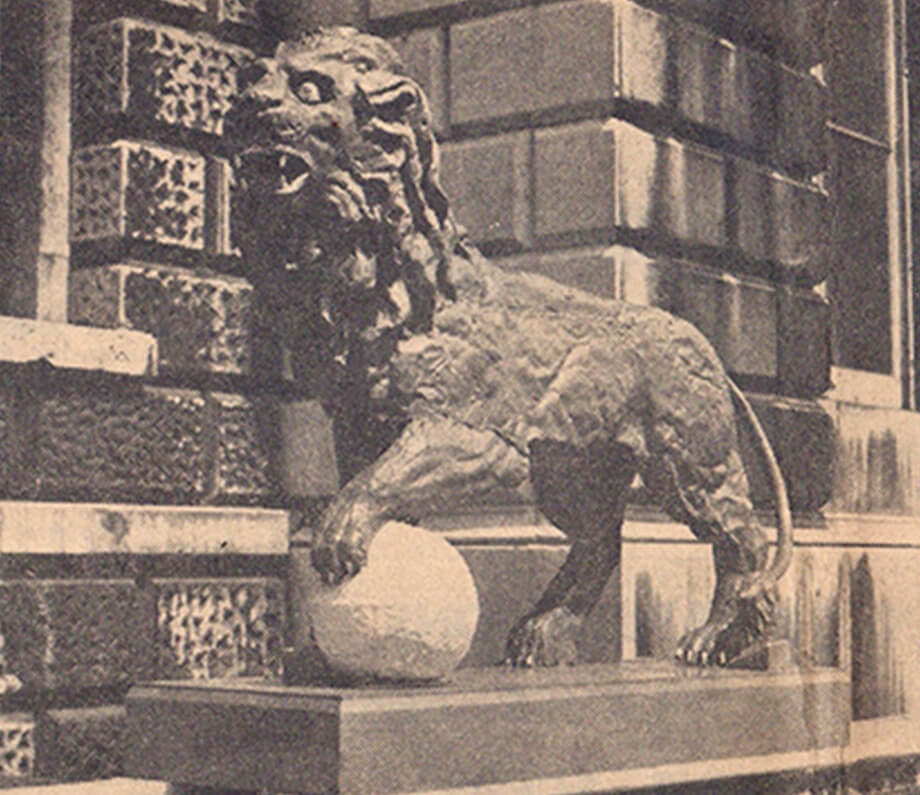
The war ends, and Reggie returns to King’s with his new family in tow. King’s had sadly received some bomb damage, and the toll of the war on King’s students and staff had been great. Mascotry would never be the same again.
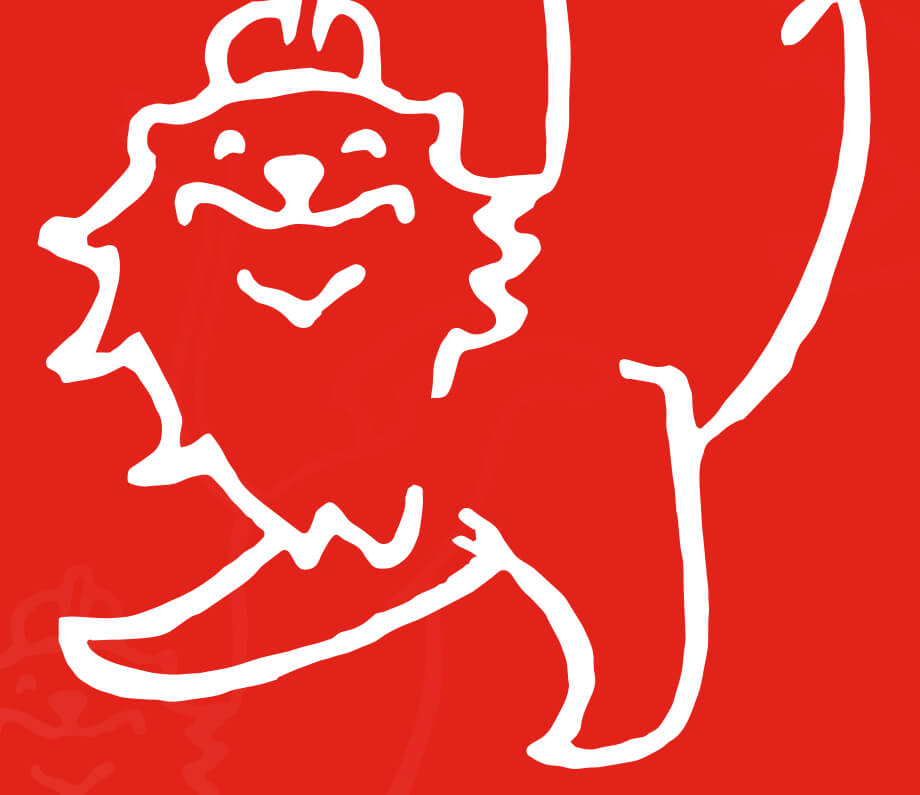
Reggie is castrated with a can-opener by UCL students at the Foundation Games. During the summer of the same year, King’s engineers attempt to repair the damage but are only moderately successful.
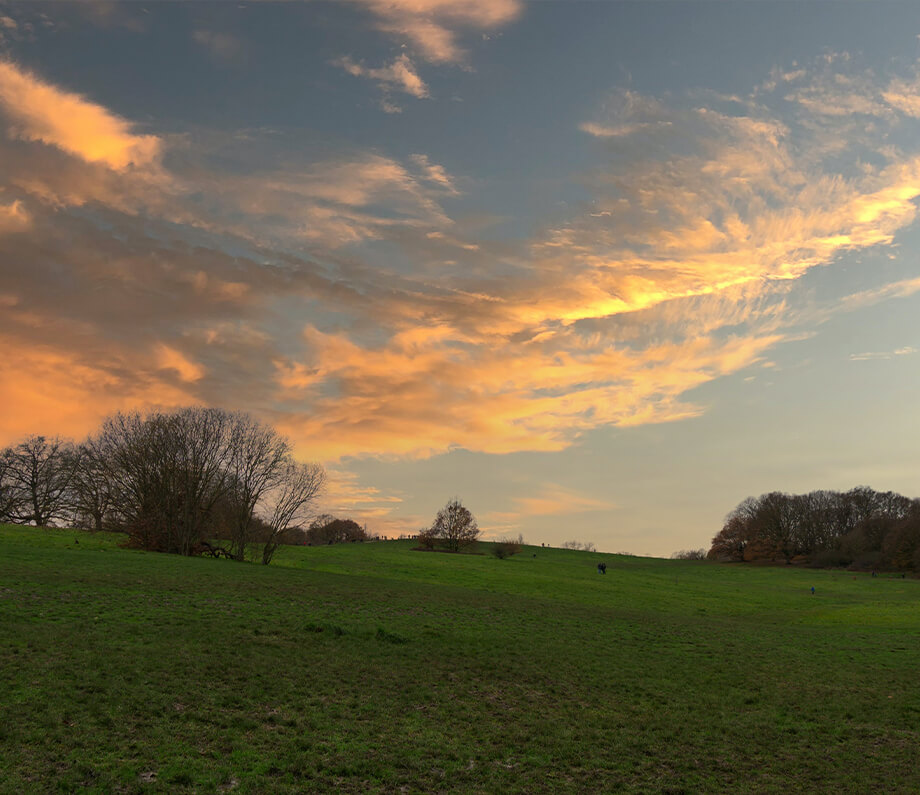
A sub-committee of the Engineering Society is appointed to overhaul Reggie. The College agrees to provide financial assistance for this purpose. Junk is removed from Reggie’s stomach, he is filled with concrete and given a new base to stand on. UCL students steal Reggie and bury him in Hampstead Heath. He is later exhumed.
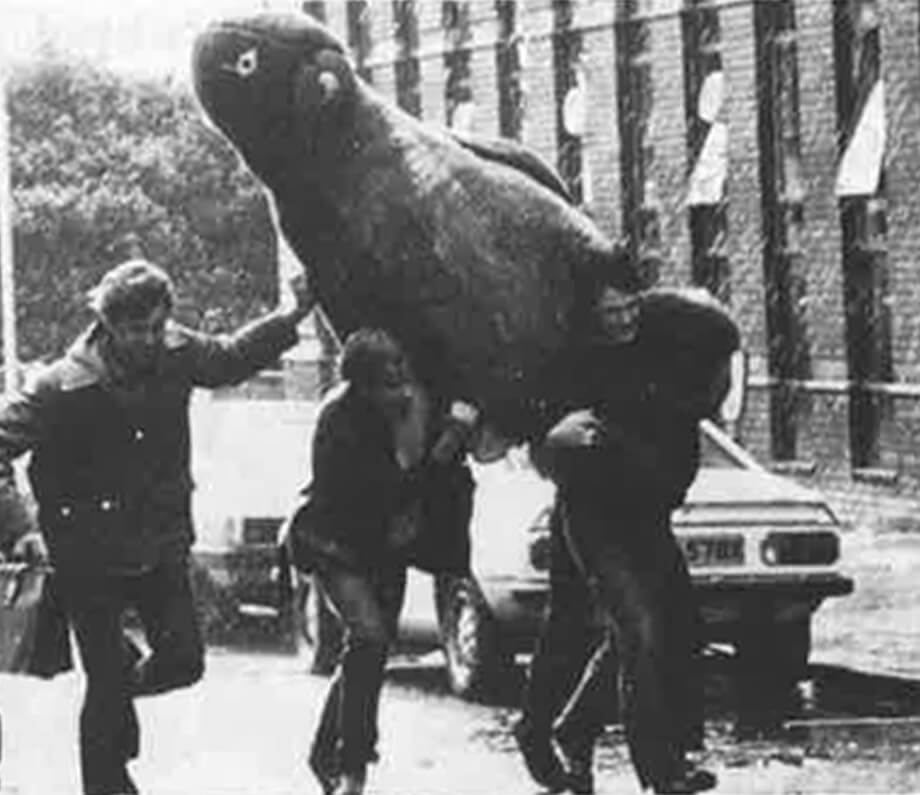
Queen Mary, Imperial and the London School of Economics join the mascotry wars. Queen Mary students send Reggie variously to a hotel in Inverness, the zoo in Blackpool and Manchester University. King’s engineers are named the ‘Official Guardians of HRH Reggie’.

King’s students accompanying Reggie are ambushed on their way home from watching King’s compete in the University Challenge final. 30 UCL students kidnap Reggie in the back of a car. Initial rumours suggested Reggie had been stolen away to Bangkok – these intensified when no ransom note appeared.
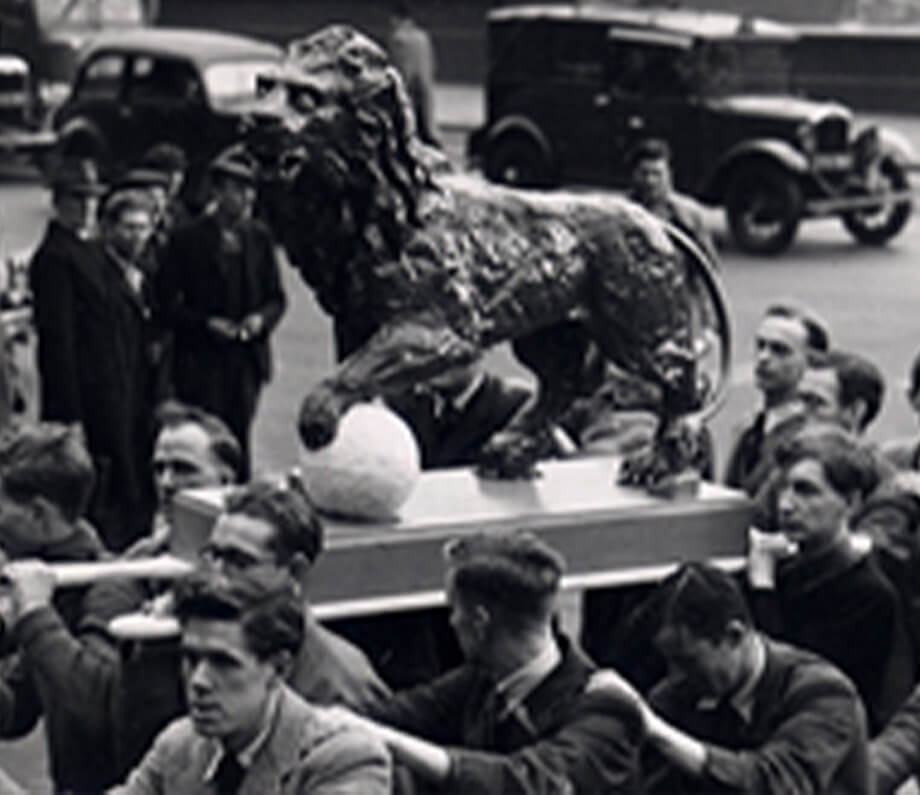
Reggie is discovered by a dentist in the Devil’s Punch Bowl, a huge quarry-like pit near Guildford. His back legs and tail are destroyed, and he is almost completely flattened. King’s engineers once again restore him.

Reggie attends the Lord Mayor’s Show.
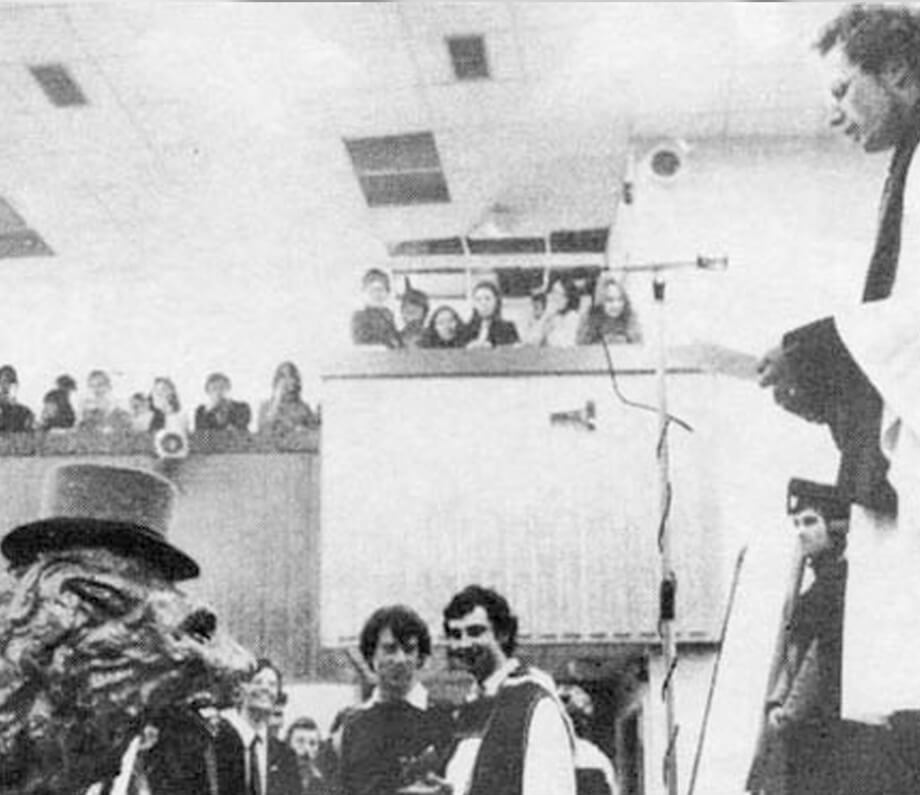
Reggie is married. Mrs Lion swiftly disappears, however, and is never seen again.
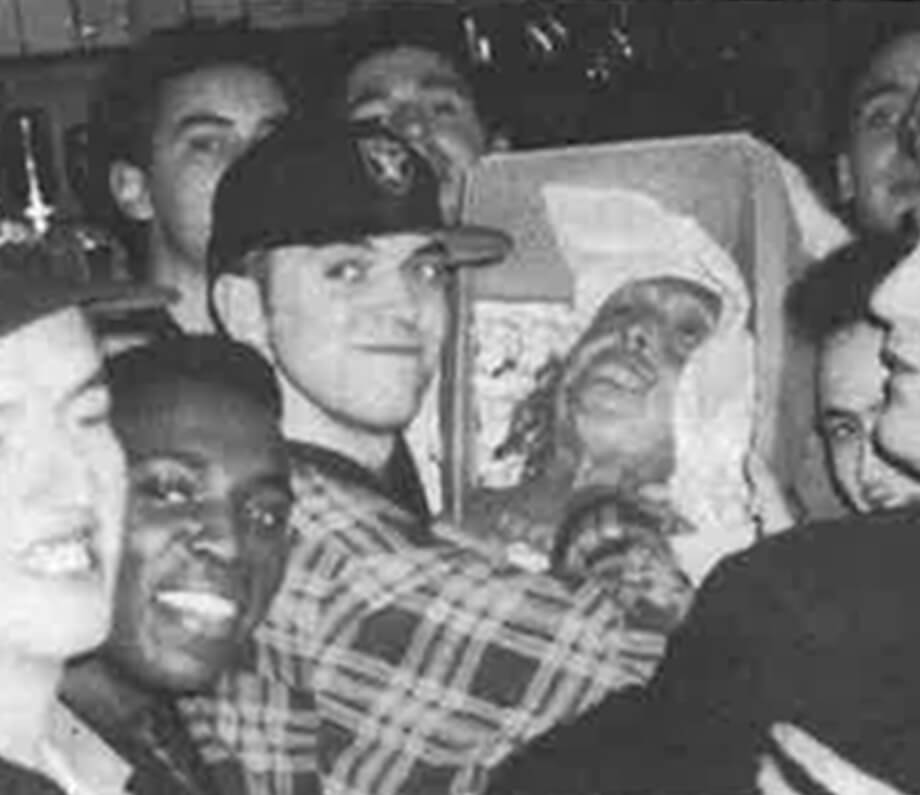
King’s students steal Jeremy Bentham’s (real) head and take it back to Strand Campus. Bentham was a philosopher and political radical, famous for formulating the theory of utilitarianism (a form of moral philosophy which posits that an action is morally correct if it causes happiness in the greatest number of people); Bentham stated in his will that he be preserved as an ‘auto-icon’, and his body was gifted to UCL (a university of which he had been very supportive) by his friend Thomas Southwood Smith in 1850. According to myth, King’s students played football with his head on Kingsway. This resulted in a formal complaint from UCL.

King’s students steal Bentham’s wax head (the real one had since been stored in a safe). UCL refuse to have anything further to do with mascotry, which remains the case to this day.
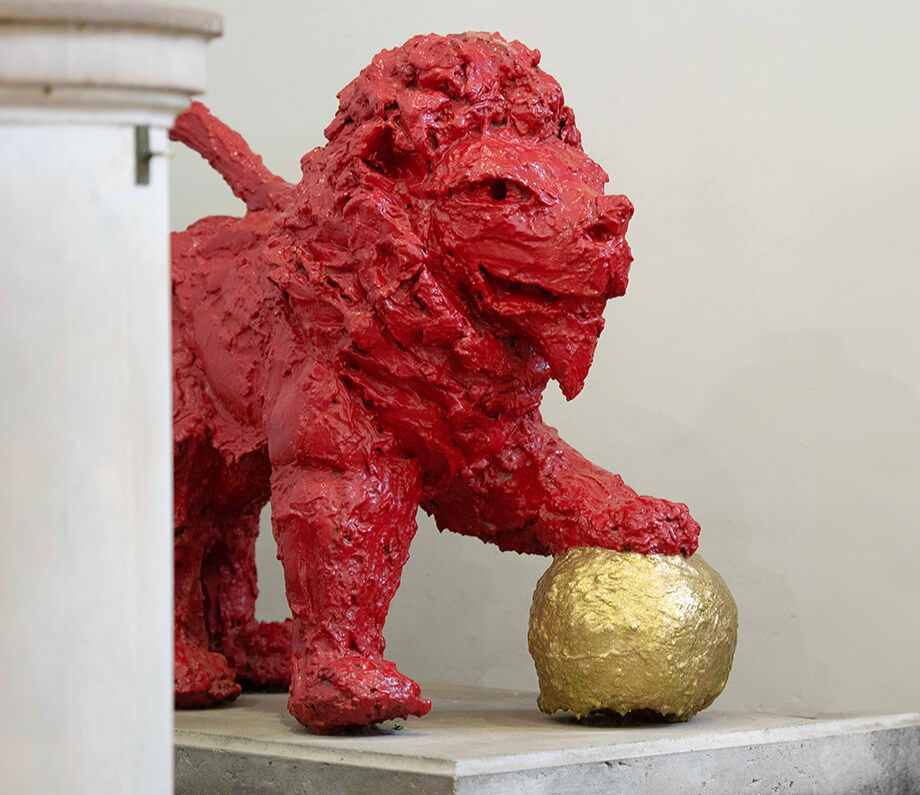
While on a mission to provoke Imperial by painting one of the lions at Queen’s Tower bright red, King’s students spot another target at the Old Union Bar in Imperial’s Beit Quad – behind the bar, mounted on a plaque, is Reggie’s manhood. The item is promptly rescued and restored to its rightful place.

Alumnus John Houlston creates a new Reggie, now displayed in the entrance hall of the King’s building at Strand Campus.
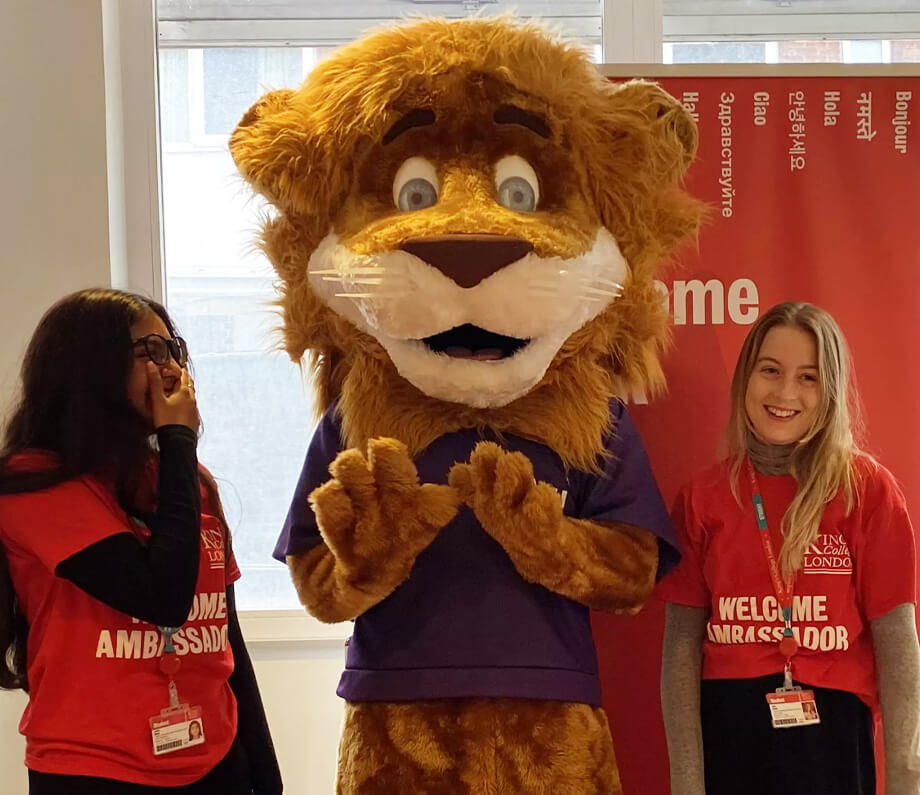
Reggie receives his most recent restoration. He remains proudly displayed at King’s outside King’s College London Students’ Union (KCLSU).

UCL retires Phineas as its mascot, bringing an end to the mascot wars once and for all.
Nowadays, Reggie is everywhere in University life – more than 18 KCLSU societies use a Reggie icon in their communications, and the student newspaper, Roar, is named for him. In 2004, a reunion of alumni gathered for Reggie’s 80th birthday, and he remains a symbol of pride in King’s for many alumni. He is used to celebrate the alumni community, with pins of his image given out during graduations and statues of him gifted between alumni. As a mascot, Reggie attends some university sports fixtures and is often represented on branded activewear merchandise. You could be the proud owner of your very own Reggie merchandise by completing our Making History Issue quiz.
With the original Reggie restored in 2003, we hope that he may now watch over King’s, undisturbed, for another hundred years.
Do you have a favourite image or memory of Reggie from your time at King’s? Let us know at forever@kcl.ac.uk. If you’d like to return to campus to visit Reggie yourself, we would be delighted to see you.
You must be logged in to post a comment.

The King’s Archives is a huge collection, housing articles that date all the way back to 1828. We invite you...
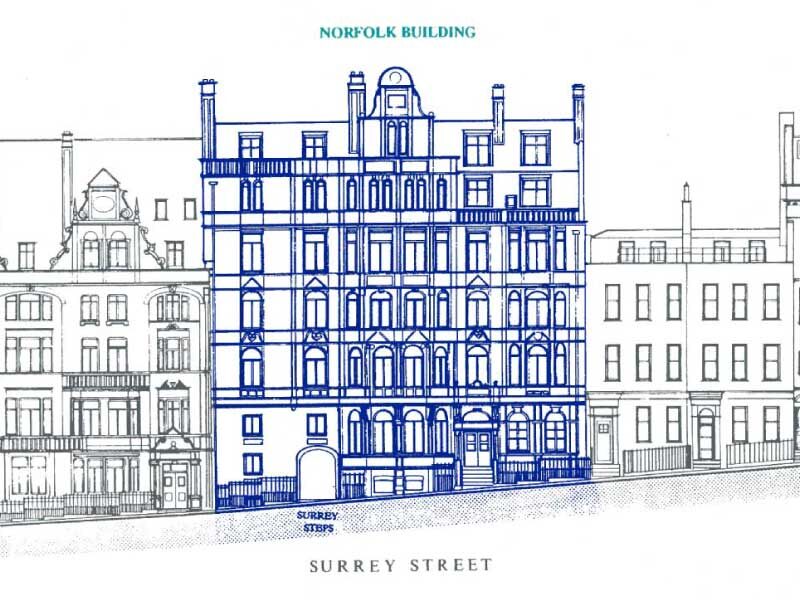
InTouch Online reflects on the Department of Geography’s early beginnings, highlights its present-day achievements, interviews its longest-serving staff member and...
In either 1969 or 1970 I was in the party of Engineers who inserted Reggie as an unofficial entry at the tail of the Lord Mayors parade. Due to the weight of concrete Reggie sat on a frame of scaffold poles with a minimum of 8 supporters. At, I believe, the Temple Bar the police inserted themselves between us and the end of the official procession and I distinctly remember standing face to face with some very determined policemen.
I was part of the famous 1989 Jeremy Bentham head raid. My recollection, although I may be mistaken, is that it was in retaliation to UCL kidnapping Reggie.